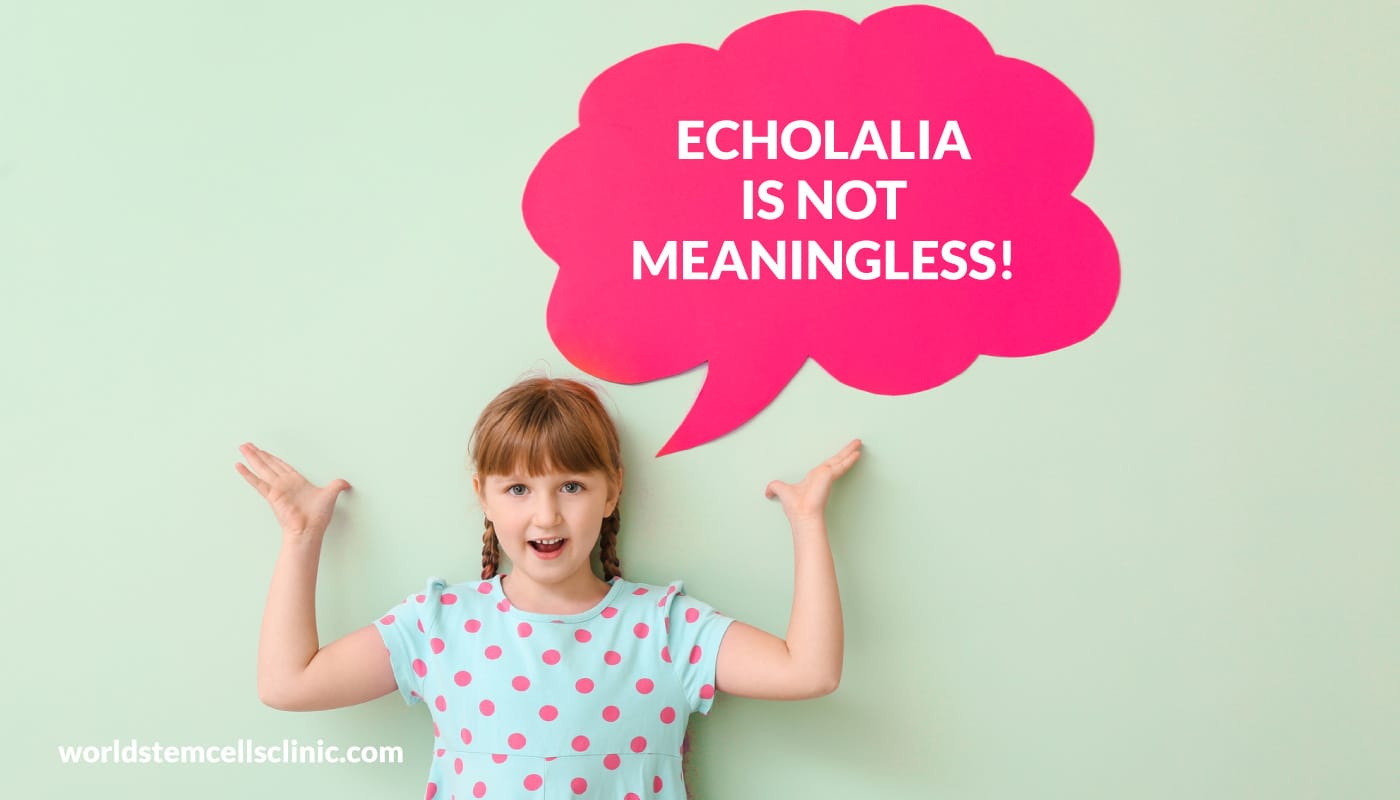
Echolalic Phrases Have a Meaning: Here Is How To Interpret Them
There is a popular belief that echolalia consists just in the vague repetition of words in autistic children. They were thought to have no real meaning.
Fortunately, new research suggests that contrary to that belief, echolalic phrases have an explanation and they are meant to convey something.
Today, we will share with you a few tips to help you understand the meaning behind them.
The Truth About Echolalia
Echolalia is the repetition of words, phrases, and even sounds in autistic individuals. In immediate echolalia, the children repeat automatically the same phrase that has been said to him/her.
According to new research, echolalic phrases can actually have a meaning and it can range from inclusion to affirmation, to even requesting and protesting.
The following examples were taken from the study “The Functions of Immediate Echolalia in Autistic Children” and will help you understand how to properly respond while developing conversational tools with your child.
Echolalia Directed to Others
Taking a Turn in a Conversation: In this scenario, children want to engage in conversation and have attention.
Example:
Adult speaker: “Where did you go on Sunday?”
Echolalic speaker: He repeats, “Where did you go Sunday?” then, gives a quick look to the adult.
Adult speaker: “Did you go to Grandma’s house?”
Echolalic speaker: Says, “Did you go to Grandma’s house?” then, he again gives a quick look at the speaker. Looking at the speaker is not an essential part of the sequence but it adds clarity to this text example.
Making a Declaration: The function in this case of echolalia is to point that he/she heard the speaker.
Example:
Adult speaker: As he checks the nearly empty cookie jar, he says, “I better buy some more cookies.”
Echolalic speaker: As he also touches the cookie jar, he says, “I better buy some cookies.” No verbal response or action is required from the adult speaker. However, the child does not attempt to take a cookie out of the jar.
Affirmation: In this case, the child wants to say yes to the speaker through the repetition of words.
Example:
Adult speaker: “Do you want some juice?”
Echolalic speaker: “Do you want some juice?” then, he looks at the pitcher and continues to hold out his hand waiting for a glass of juice.
Request: The child is asking for something by emulating the question of the speaker but making a change.
Example:
Adult speaker: “Do you want some crackers?”
Echolalic speaker: “Do you want some pretzels?”
Self-Directed Echolalia
Non-Directed: These are self-regulatory phrases that the child directs to himself/herself and implies no message to the speaker.
Example:
Adult speaker: “What’s wrong? Why are you screaming?”
Echolalic speaker: As he continues to walk and flap his hands; he intermittently screams and slaps his own face. Then, he begins to say to himself “What’s wrong? Why are you screaming?”. As he continuously repeats “What’s wrong? Why are you screaming?” he slaps his face, again.
Rehearsal or Practice: When given a command, the child repeats it to not to forget or to have better comprehension.
Example:
Adult speaker: “Give this to Jim.” (Hands over the notebook.)
Echolalic speaker: He turns around, starts pacing, then he softly says “Give this to Jim” several times. The pacing stops and he walks over to Jim. Then he gives the notebook to him.
To Regulate Himself/Herself: The child repeats the command that the speaker says to force himself/herself to change the behavior and/or shift his/her mindset.
Example:
Adult speaker: “Don’t jump on the bed.”
Echolalic speaker: He repeats “Don’t jump on the bed” several times to himself as he gradually decreases the jumping, ceases the action, and finally gets off the bed.
Delayed Echolalia
In delayed echolalia scenarios, the child can bring “unrelated” issues to the conversation to provide answers.
These apparent unrelated phrases are in fact responses that the child is providing to guide the conversation. Here are some examples:
Taking Turns: Here the child is offering information on what he/she knows is related to the question or conversation taking place.
Example:
Adult speaker: “What did you do this weekend?”
Echolalic speaker: “Don’t take your trunks off in the swimming pool.”
Adult speaker: “Oh, you went swimming?”
Echolalic speaker: “Put your goggles on. Then you won’t get chlorine in your eyes.”
Positive Reinforcement: The child responds to the act by complementing himself/herself to create a positive reaffirmation.
Example:
Adult speaker: “Wash your hands.”
Echolalic speaker: As he washes his hands, he says, “Good boy.” He said this because his teacher typically says the same phrase as a way of reinforcing the completion of an act.
Protest: The child repeats a phrase that has been told to him/her as a corrective measure, and he/she uses that to rectify others.
Example:
He sees a sibling throwing toys all over the living room.
Echolalic speaker: “How many times have I told you not to do that? I’ve told you 1000 times. Go to time out, now, I’ll count to three. 1-2-3.”
In Conclusion
Remember, echolalia is a normal part of speech development in toddlers. However, autistic individuals often continue to use echolalic speech through childhood and, at times, adulthood.
Echolalia should not be discouraged. Generally, as communication skills improve, the occurrences of echolalic speech diminish.
At WSCC, we offer support for autistic families and their children with Stem Cell Therapy treatments that can transform autistic conditions by healing the gut, decreasing inflammation, and improving brain function. We also created an autistic community on Facebook that is destined to offer support and companionship for ASD parents and their families on their journey.
Remember, you are not alone!
https://worldstemcellsclinic.com/
Sources:
